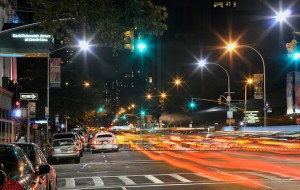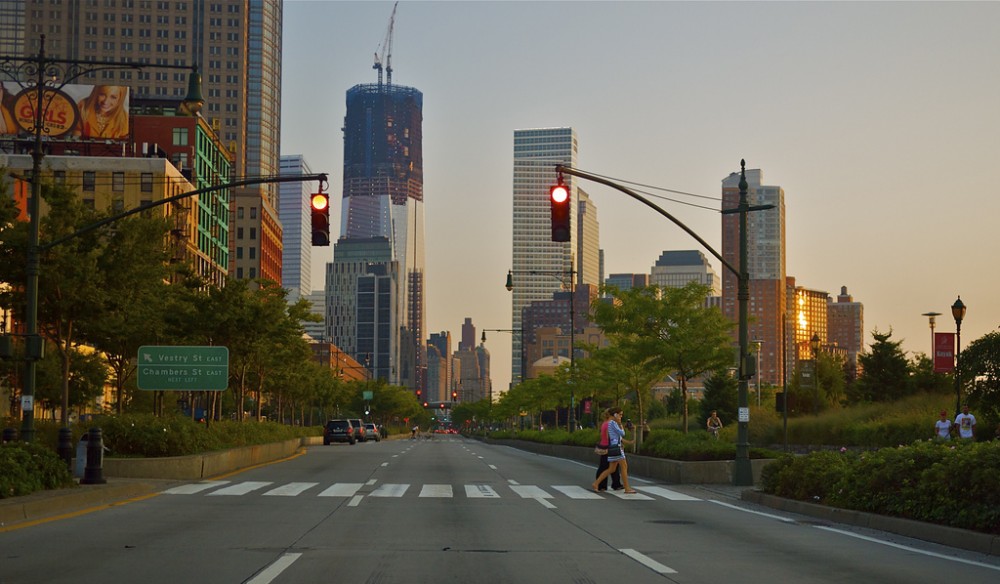
Green lights at consecutive intersections. The next red light in the distance will soon change green to permit vehicles to go.
Cities all over the world, no matter how different, have one problem that they have in common. That is congestion. A very easy and cost effective way to decrease congestion and keep traffic moving in the most efficient way is to coordinate signals. This means that every signal as a motorist drives down a stretch of road will turn green depending on the amount of time it takes to reach the next signal or by the amount of congestion that is detected by the signal.
The time corresponds to whatever the speed limit is on the street which increases safety. If a motorist drives faster than the speed limit he will hit a red light and stop. This deters motorists from driving faster than the speed limit. Manhattan has excellent examples of coordinated traffic signals on its one way north/south avenues. You can go as much as two miles (roughly 40 streets) without stopping in the best conditions which is excellent for congested Manhattan.
However, I feel that this concept should be applied everywhere including outside of the the center city. Why not Queens and Brooklyn or Northampton Street in Easton, PA? I feel like this is a concept that is ideal for the motorist and the pedestrian. One may argue that the traffic on these roads do not warrant coordinated signaling which is expensive. However, if you look at an environmental standpoint, the amount of pollution that would be reduced is incredible. If you look at an efficiency standpoint, people arrive at their destinations faster. And when people arrive to their destinations faster, there are less vehicles on the streets contributing to a decrease in congestion.
Pittsburgh has implemented successfully a highly intelligent traffic signal system that is shortening commuter times while reducing emissions on congested city streets. It resulted in a 40 percent reduction in vehicle wait time, 26 percent reduction in car travel time and a 21 percent cut in vehicle emissions. That is awesome! Why not do this in every city or on every major corridor? Perhaps one day.

Within downtown Easton itself I’ve never actually ever faced a problem with traffic or lights that would warrant this (except for the circle but that’s another story). While there would be gains from coordination, the question isn’t if there would be gains, it is if the gains are more than those that could be had by spending an equivalent amount of money elsewhere. Granted that I don’t spend much time in downtown Easton, my experience would suggest that those resources could be better spent elsewhere as the problem they would correct is not particularly large.
I think it is a good idea to have a coordinated traffic signals, congested or not. This can also discourage speeding as people who drive slightly over the speed limit would wait at the red light at least for some time anyways, while people who follow the speed limit goes through several consecutive green lights.